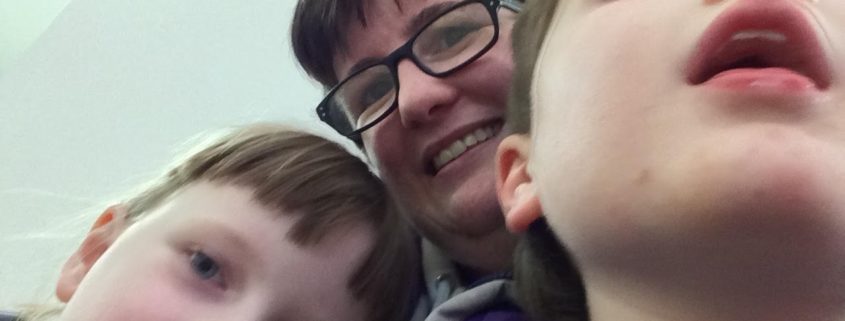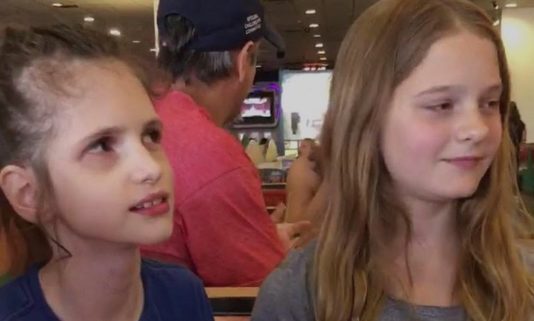Five Things Only an Autism Parent Would Understand
There is a famous quote by C.S. Lewis that says, “Friendship is born at that moment when one person says to another, ‘What! You too? I thought I was the only one.’”
As a parent to two children with autism, I often think I am alone, struggling with things that I think nobody else would understand. And then I meet another autism parent, and another, and it seems we have so much in common.
Here are five things I have found that every autism parent understands whether your child can speak or not, whether they have learning difficulties or not, whether they are now adults or still in nappies. If you know these five things, know this too: You are not alone!
1. The Look
You know the ones where every eye is on you and your child because they are acting differently? Whether they are flapping, spinning, screaming, humming, rolling on the floor, or running away, autism parents know that look well. The look of judgment, curiosity, condemnation and contempt. Sometimes, it is a solitary look; other times it is all-consuming and you can feel their eyes staring right through you.
We are raising unique, smart, wonderful children that are too often misunderstood. Hold your head high, autism parents, and keep walking. It’s stressful, but it gets easier!
2. The Exhaustion
Even if you are blessed with a child who sleeps (which isn’t that common with autism), we all know the exhaustion. The appointments, the therapies and the constant need to interpret the world on your child’s behalf takes it out of you. Exhaustion causes so many of us to struggle with health problems—both physical and mental—and forget the most basic of things. Sleep deprivation and stress can make the most intelligent autism parent forget how to spell the simplest of words on a vital form. Be kind to yourself. You are raising an energetic and spirited child who will change the world; but right now they’re zapping your energy. We have all been there!
3. The Fight
I have yet to meet a parent who has had their child diagnosed quickly and easily, had every service they require to make their child the best they can be given freely and plentifully, or had full support in education from Day 1. Maybe there are some out there, but it is rare to find.
From the moment we suspect our children are struggling, we enter a fight: a fight for therapy, a fight to be listened to, a fight for the best education for our children. We fill in forms just to have things declined by people who have never met our child and, as if this was not bad enough, we then have to fight a society that still views autism as “Naughty Child Syndrome” or “made up.” If we complain, we are seen as troublemakers; if we call too often, we are pushy; and if we write about our children on social media, we are either over-sharing or attention-seeking! It makes no difference what age your child is or what ability they have, one thing I have found in common is the fact we all seem to have to fight at some point.
Can I tell you something parents? Our children are worth it. Keep fighting.
4. The Constant Vigilance
When you have a child or adult who struggles with communication, be they verbal or not, it is a guarantee they will need more support and supervision than others. When your child has no awareness of danger and is vulnerable, you have to be always vigilant. Even when they are out at school or with carers, that vigilance never eases. We have to be aware of where they are and who they are with always because we have children and adults who are easily confused and anxious.
We have to think about dangers long before they appear, like water, roads, open doors, sudden noise and objects they may eat. We live with a heightened level of anxiety and awareness that other parents often misinterpret as overindulgence or being hyper-protective.
It’s hard, I know that, but you can do this!
5. The Worry
The worry is always there. Worry about change and how it will affect them; worry about political issues that could affect future benefits; worry about what will happen when we die; worry about whether they will ever be accepted and understood. Before they start their education, we worry about teachers and friends, and then as they get older, we worry about jobs and relationships.
Yes, all parents worry about their children, but we have so much more to think about. Nothing is taken for granted when your child has autism. Friendships are confusing and stressful, language is a mystery, and repetitive movements are misunderstood and mocked. We are raising babies the world finds fascinating yet exposed, interesting yet misunderstood.
We have reason to worry. Yet, we also have reason to be at peace. There are teachers who will care, assistants who will go that extra mile and employers who are ethical.
Stay positive. Together, we can help make the world a better place for all our children.
Have you been there? Do you know the looks, the exhaustion, the fight, the vigilance and the worry? Welcome to the wonderful world of autism parenting. It’s hard, but well worth it. And it’s great to find others who understand.










